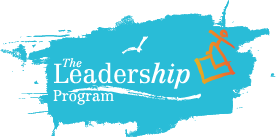
“What is the Experiential Learning Cycle” is part one in a six-part series
The Leadership Program uses a questioning process called the Experiential Learning Cycle. We use the process with students and adults alike. But we didn’t invent it. The people given greatest credit are David Kolb and J. William Pfeiffer along with John E. Jones. The earliest models of the process appeared in the mid 80s. Some call this the “What, So What, and Now What” method.
So you may be asking yourself, “What is the Experiential Learning Cycle?”
I like to think of it as a continuous cycle. A cycle that takes me from Me to We/Group to World to Better Me… and then back again. The idea is that greater learning and meaning can come from ANY experience. You only need to take the time to reflect on it.
I hear you now saying, “OK, but what is the Experiential Learning Cycle process?” What does it look like?”
Our use of the Experiential Learning Cycle follows five steps:
What is the Experiential Learning Cycle?
1. The Experience itself.
This can be a scheduled activity, current event, or an unexpected discussion. The experience is the thing that happens.
2. Publishing .
Participants reflect on their personal journey through that experience. In the publishing phase, participants are only reflecting on themselves.
3. Processing
Participants reflect on observations that other participants who shared the experience had. This is the chance for participants to consider what happened in, and to, the group.
4. Generalizing.
Participants think about other times where they had similar feelings or observations. During this phase, participants are stretched to think about the experience. They work to relate it to other aspects of their life.
5. Applying.
Participants think about things they learned from the experience. A successful application has participants consider how they can “apply” what they learned. Ideally, as a result of the experience, participants will have more successful outcomes in the future.

I will explore each of these five steps in separate articles. These posts will dig into the meaning and value behind each step. However, I can tell you this: when our facilitators commit to dedicating the time and space for the Experiential Learning Cycle—whether with elementary students or adults—the takeaways become so much more valuable. What seemed like a simple ball toss becomes a reflection on how we respond under pressure. What began as a group teambuilding game evolves into a reflection about roles and leadership.
“What is the Experiential Learning Cycle’s Relationship to curriculum?”
We believe in this cycle of reflection and learning deeply. In fact, we’ve developed our curriculum to follow a similar path. We start with an Introduction to Leadership, to ground ourselves in who we are and what our goals are. We then we head into following elements:
- Self-Concept (me)
- Group Dynamics (We/Group)
- Vision and Imagination and Conflict Management (World)
- Final Project (Better Me)
This progression allows our participants to scaffold their understanding. Participants see how it pertains to them, to their classmates/colleagues, to their community and world, and to the best possible version of themselves. It’s the fundamental foundation upon which deep learning and discovery occurs. Moreover, it’s impactful in ways that are truly difficult to express when simply describing it.
Now, here’s the hard part. Our world celebrates the fast-paced, get ‘er done way of living. Pausing for reflection can seem counter-intuitive. It can feel awkward, or even a waste of time. This is especially true when you first attempt to use the Experiential Learning Cycle. Answers might come haltingly or not at all. You might be met by blank stares. It can be tempting to toss it aside and move along to the next EXPERIENCE. But I urge you to persevere. Even in silence. Ask the questions and allow space for the answers. This will give your participants time to think…even if they don’t answer you right away (or ever). Giving them the space to think is giving them the time to reflect. Giving them the time to reflect is giving them the opportunity to grow. Have the great honor to be with a group more than once? Persist in asking them the questions every time. They will come to expect it. Even more, they will come to count on it. Reflection is a muscle that grows stronger with practice. Don’t give up on it!
Are you looking to take your facilitation skills to the next level? Do you want to foster expanded group learning and exponential growth? If so, we recommend the Experiential Learning Cycle. It is an essential tool that can help you do just that. Stay tuned for future articles that further break down each step, further clarifying “what is the experiential learning cycle.”
Questions? Thoughts? Please post me in the comments below or Tweet to @ErikaPetrelli1
Continue reading about the ELC...







Comments [0]
Click here to read/write comments